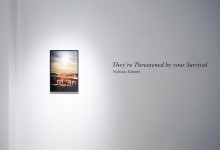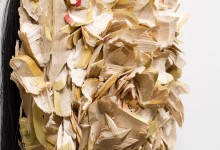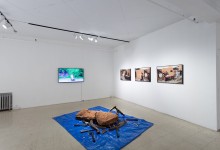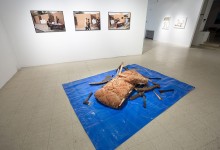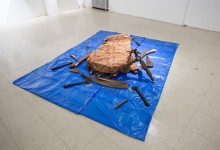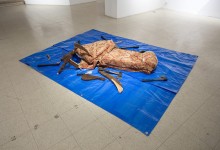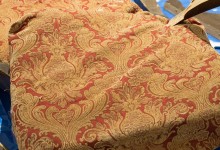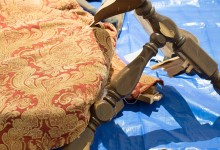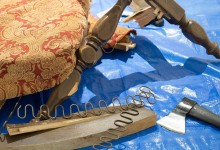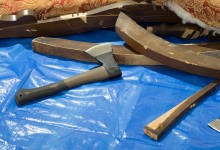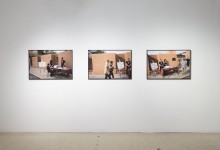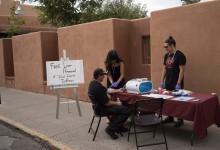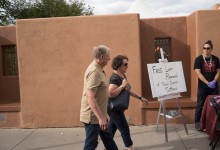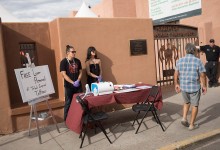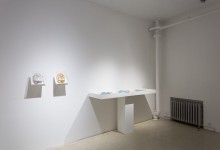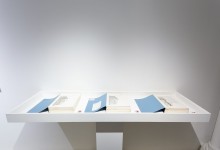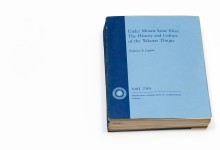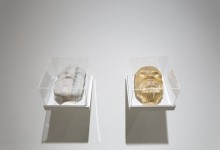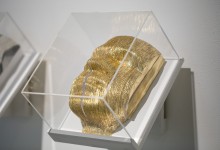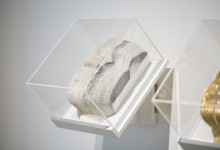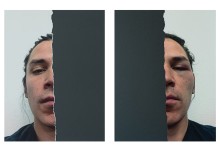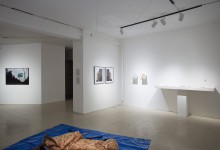Opening reception: Saturday, September 7, 2019 from 3-5 p.m.
Nicholas Galanin: They’re Threatened by your Survival
Art Mûr Montreal, QC
Text by Nathalie Agostini
Nicholas Galanin’s first solo exhibition in Montreal combines sculptural works, multimedia installation and photographic prints from 2012-2019. A sharp observer of a broadly assessed contemporary culture, Galanin works around themes of resistance, the land, and a history of survival through language, resilience and creation. Through his multidisciplinary practice, the artist at once sheds light on the critical issues that divide nations and communities, and on the human practices that bind them.
Stemming from a long line of artists, Galanin, who is of Tlingit-Unangax̂ descent, was trained in the traditional techniques and imagery of Tlingit and Northwest Coast art, as well as in Western contemporary art and aesthetics. Certain works serve to testify that, just as weapons are technologies designed with the aim of enabling survival, so tools, in craft and cultural production, are fundamental to the preservation of culture. From the hatchets referring to territorial destruction (Unceded, Monument of a Nation, both 2018) to replica carvings splintered apart (Unceremonial Dance Mask, 2017), Galanin both honours his heritage and explores new perspectives that reach out onto questions of land, (self-)identity and (self-)portrayal.
The artist engages with the political, social and cultural implications of contemporary identity in both Indigenous and non-Indigenous contexts, for instance critically questioning classifications of imposed (in-, sub)humanity. “Stereotypes and romanticization of Indigenous people are rooted in centuries-old justifications for genocide which have been continued via blood quantum and ethnicity based on percentage,” Galanin wrote in 2018.1 “We are the only community in the United States whose blood percentage is monitored to determine if we are registered with the Bureau of Indian Affairs by a number.” Galanin’s self-portrait from 2019, a diptych of a torn photograph in which one side of his face is swollen and bruised, plainly addresses the issue of blood quantum and its associated violence,2 after the artist James Luna’s half-portraits.
As a stark contrast to such dehumanizing tactics, Galanin’s work speaks of broad human practices, like touch and connection through language (Survival Exercises, 2017, in collaboration with Merritt Johnson). The video work, showing a loop of layered imagery of embracing bodies, suggests that “physical, emotional and cultural survival” can be borne through human contact, intimacy and, broadly speaking, family and community, particularly following violence. Galanin tells stories of creation, intrinsically linked to the land and to communities. As the critic Jerry Saltz observed, Galanin’s work in the 2019 Whitney Biennial “nails the malign aberrations of what’s happening with whiteness in America as well as what all information turns into right now, as the ice near Galanin’s Alaska melts.”3 The final thought – now that the ice near Alaska’s shores has melted away completely – resonates through Galanin’s works like a bell that the communities on the front line of the climate crisis have heard tolling, and been warning of, for generations.
1. Nicholas Galanin, “Out of Line: Nicholas Galanin Rejects the Traditional / Contemporary Binary,” March 26, 2018, Walker Reader, walkerart.org
2. Blood quantum is the measurement used to define bloodlines defined by ancestry. With regards to people of indigenous descent, the notion of blood quantum was created to track racial ancestry, and was enacted in laws that restricted their rights. Blood quantum laws remain a most divisive and highly controversial issue today.
3. Jerry Saltz, “The New Whitney Biennial Made Me See Art History in a New Way,” May 14, 2019, Vulture, vulture.com



